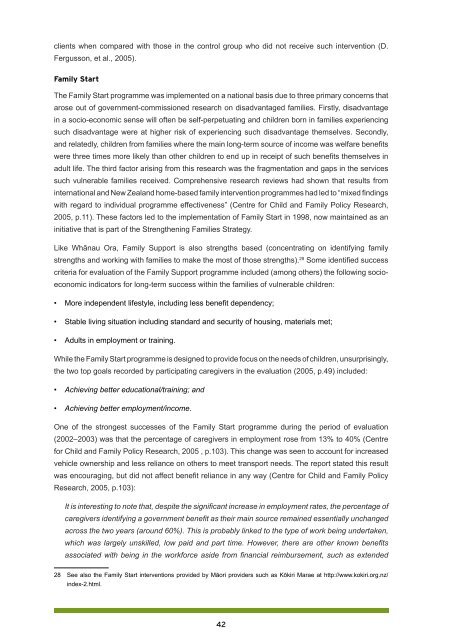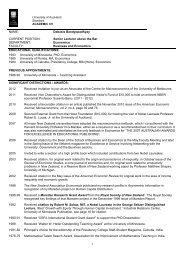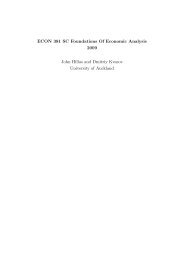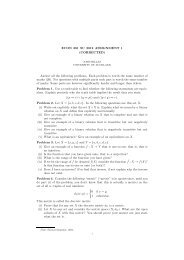Left Further Behind - Child Poverty Action Group
Left Further Behind - Child Poverty Action Group
Left Further Behind - Child Poverty Action Group
You also want an ePaper? Increase the reach of your titles
YUMPU automatically turns print PDFs into web optimized ePapers that Google loves.
clients when compared with those in the control group who did not receive such intervention (D.<br />
Fergusson, et al., 2005).<br />
Family Start<br />
The Family Start programme was implemented on a national basis due to three primary concerns that<br />
arose out of government-commissioned research on disadvantaged families. Firstly, disadvantage<br />
in a socio-economic sense will often be self-perpetuating and children born in families experiencing<br />
such disadvantage were at higher risk of experiencing such disadvantage themselves. Secondly,<br />
and relatedly, children from families where the main long-term source of income was welfare benefits<br />
were three times more likely than other children to end up in receipt of such benefits themselves in<br />
adult life. The third factor arising from this research was the fragmentation and gaps in the services<br />
such vulnerable families received. Comprehensive research reviews had shown that results from<br />
international and New Zealand home-based family intervention programmes had led to “mixed findings<br />
with regard to individual programme effectiveness” (Centre for <strong>Child</strong> and Family Policy Research,<br />
2005, p.11). These factors led to the implementation of Family Start in 1998, now maintained as an<br />
initiative that is part of the Strengthening Families Strategy.<br />
Like Whānau Ora, Family Support is also strengths based (concentrating on identifying family<br />
strengths and working with families to make the most of those strengths). 28 Some identified success<br />
criteria for evaluation of the Family Support programme included (among others) the following socioeconomic<br />
indicators for long-term success within the families of vulnerable children:<br />
• More independent lifestyle, including less benefit dependency;<br />
• Stable living situation including standard and security of housing, materials met;<br />
• Adults in employment or training.<br />
While the Family Start programme is designed to provide focus on the needs of children, unsurprisingly,<br />
the two top goals recorded by participating caregivers in the evaluation (2005, p.49) included:<br />
• Achieving better educational/training; and<br />
• Achieving better employment/income.<br />
One of the strongest successes of the Family Start programme during the period of evaluation<br />
(2002–2003) was that the percentage of caregivers in employment rose from 13% to 40% (Centre<br />
for <strong>Child</strong> and Family Policy Research, 2005 , p.103). This change was seen to account for increased<br />
vehicle ownership and less reliance on others to meet transport needs. The report stated this result<br />
was encouraging, but did not affect benefit reliance in any way (Centre for <strong>Child</strong> and Family Policy<br />
Research, 2005, p.103):<br />
It is interesting to note that, despite the significant increase in employment rates, the percentage of<br />
caregivers identifying a government benefit as their main source remained essentially unchanged<br />
across the two years (around 60%). This is probably linked to the type of work being undertaken,<br />
which was largely unskilled, low paid and part time. However, there are other known benefits<br />
associated with being in the workforce aside from financial reimbursement, such as extended<br />
28 See also the Family Start interventions provided by Māori providers such as Kōkiri Marae at http://www.kokiri.org.nz/<br />
index-2.html.<br />
42









